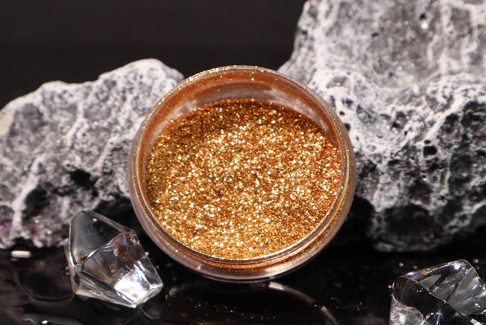Platinum Pearlescent Pigment, known for its vibrant metallic luster and exceptional durability, is an increasingly popular choice. However, to achieve the best results, it's essential to consider how this pigment interacts with other additives or pigments in a formulation. Understanding these compatibility considerations is crucial to ensure the desired appearance, performance, and longevity of the final product.
One of the standout features of Platinum Pearlescent Pigment is its unique composition, which doesn't rely on Titanium Dioxide (TiO2), setting it apart from other traditional pearlescent pigments. This TiO2-free formulation enables a similar metallic color effect to copper gold powder, but without some of the inherent challenges TiO2 can pose, such as high opacity or sensitivity to UV degradation. Despite its advantages, the pigment’s strong metallic sheen and particle size distribution—ranging from 5-500μm—mean that careful attention is needed when mixing it with other ingredients in the formulation.
The compatibility of Platinum Pearlescent Pigment with other additives or pigments largely depends on the dispersion techniques employed. Pearlescent pigments like this one are best known for their ability to create multidimensional color effects, and this can be enhanced or hindered based on how well the pigment is dispersed in the base medium. Proper dispersion is critical to achieving the full color effect, especially when combining with other pigments. Poor dispersion can result in clumping, uneven coloring, or a diminished metallic sheen, affecting both the aesthetic and functional qualities of the final product.

When blending with other color pigments, it’s important to assess their particle size and chemical composition. Platinum Pearlescent Pigment's mica-based structure allows it to reflect light in a unique way, but mixing it with incompatible pigments, especially those with significantly different particle sizes or chemical bases, can lead to a muddied or diminished effect. For instance, when used alongside traditional organic pigments, which have much smaller particles, the final appearance may lack the desired brilliance or luster. Conversely, mixing with other metallic or pearlescent pigments of similar size and dispersion characteristics can enhance the depth of color and create stunning multi-dimensional effects.
Furthermore, the pigment’s interaction with binders and solvents in the formulation is another area to consider. Platinum Pearlescent Pigment is generally compatible with both water-based and solvent-based systems, but the dispersion process can vary significantly depending on the medium. In solvent-based systems, the pigment typically disperses more readily and can provide a smoother finish. In water-based formulations, however, additional dispersing agents or stabilizers may be required to ensure proper incorporation and prevent settling. Compatibility with other additives such as UV stabilizers, anti-foaming agents, and rheological modifiers is also critical. These additives can influence the final product's performance and the pigment's stability, so it's important to conduct thorough testing to ensure they don’t interfere with the pigment’s visual and physical properties.
Temperature stability is another important factor when combining Platinum Pearlescent Pigment with other ingredients. This pigment is renowned for its excellent temperature resistance, but it’s still important to avoid extreme conditions during mixing or processing, especially when adding other high-temperature sensitive additives. Similarly, other pigments or additives with poor weather resistance could affect the longevity of the Platinum Pearlescent Pigment, particularly when the end product is exposed to harsh environmental conditions such as UV light or outdoor weathering.
Lastly, while Platinum Pearlescent Pigment provides a great deal of flexibility in terms of custom colors and effects, some careful testing should be done when incorporating it into a new formulation. Adjusting the pigment’s concentration, blending it with other pigments, or pairing it with various binders might alter its metallic sheen, durability, or even color shift, so it's essential to conduct small-scale trials before scaling up production. Customization options can help tailor the pigment to a specific need, but they must be carefully balanced to avoid compromising the product's performance or aesthetics.

